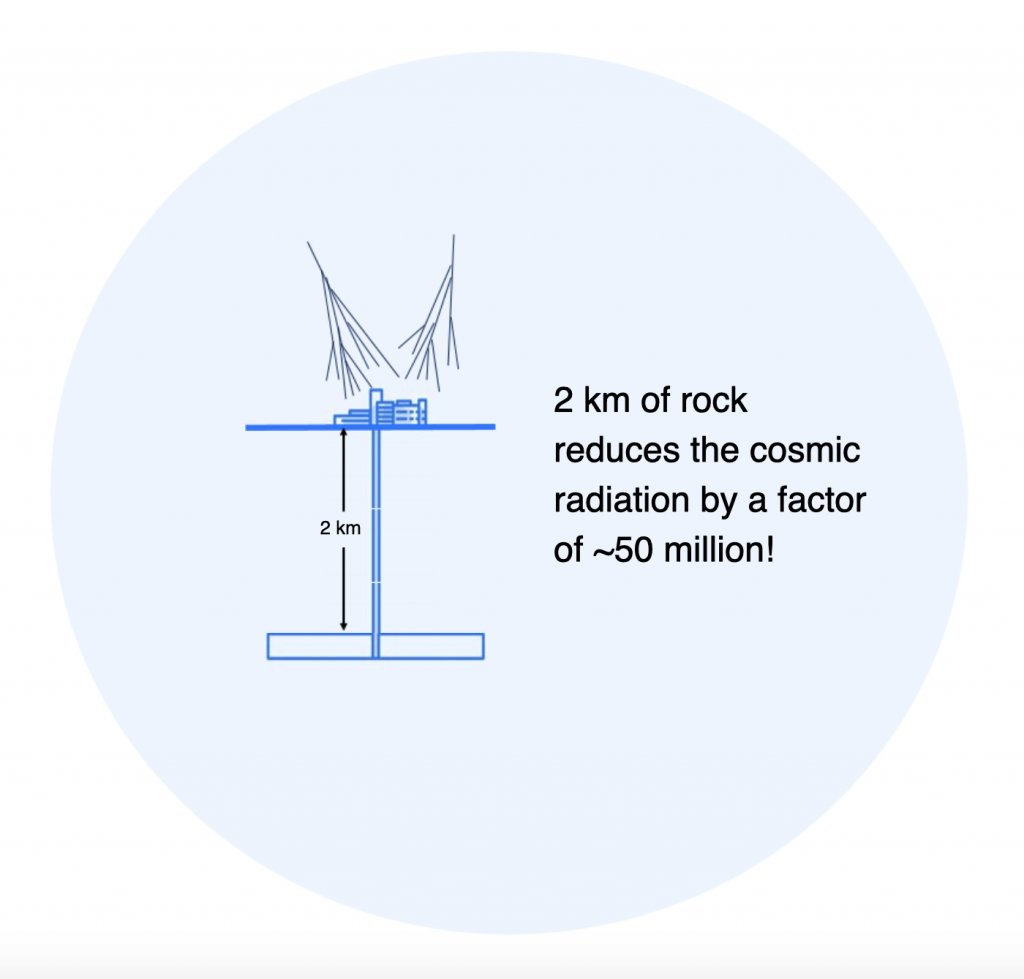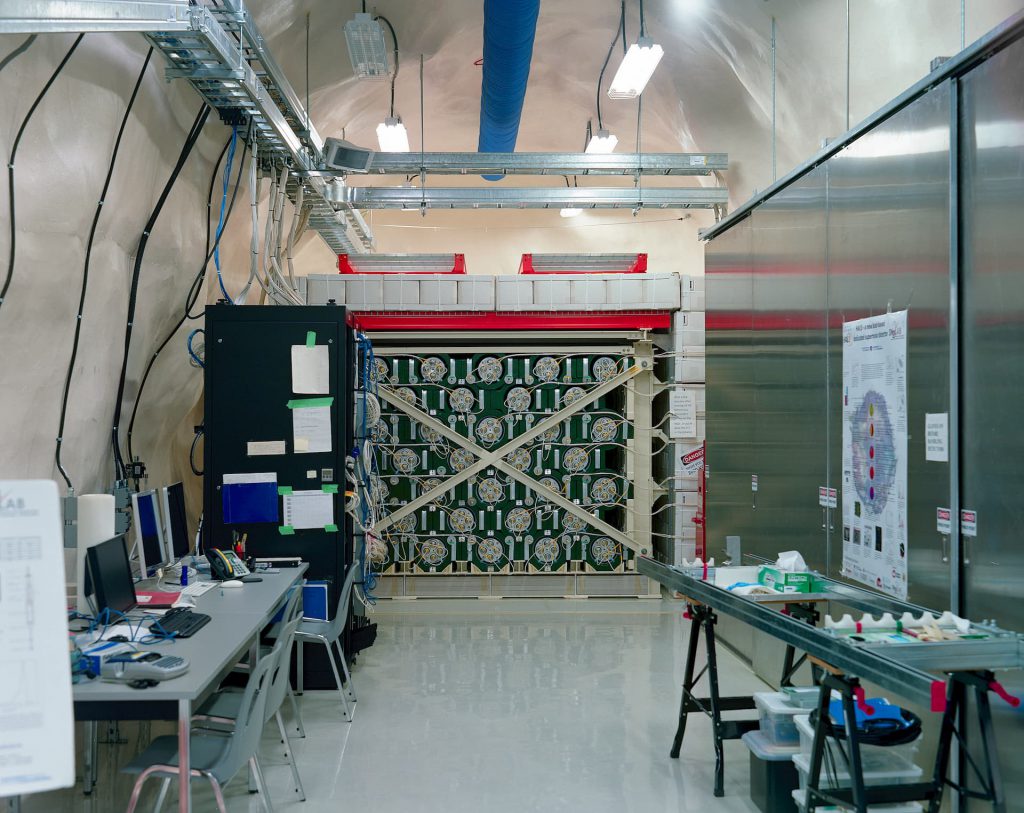Earth’s surface is constantly being bombarded with background radiation. This radiation is harmless to humans and other life on Earth, but for experiments studying particle interactions, it presents a challenge.
Many of the interactions experiments at SNOLAB study are rare: scientists expect to see one interaction per tonne of detector material per year, so the detectors need to be huge. Additionally, many of these interactions leave only faint signals in the data. Background radiation also interacts with these detectors, but much more often and with much stronger signals than the interactions scientists want to see. If these experiments were set up on Earth’s surface, it would be impossible to find the signal physicists are looking for because of all the background noise – something like trying to hear a single pin drop at a rock concert.
Quieting the cosmos: studying the universe from deep underground
Underground at SNOLAB, the 2070 metres of rock filters out cosmic rays that create most of the background radiation on Earth’s surface. This rock is an incredibly effective shield for experiments in the lab. A few cosmic rays still pass through (roughly one per square metre every three days), but they are reduced by a factor of 50 million compared to surface conditions.

The rock surrounding SNOLAB contains trace amounts of uranium and thorium, which generates some natural radioactivity through decay. To prevent this from interfering with the experiments, SNOLAB’s underground walls have special paint and each experiment has additional shielding surrounding the detector. This radioactive decay is much less energetic than cosmic rays, so it is easily stopped by a few centimetres of lead or metres of water.
While being in a mine blocks out cosmic rays, it also opens up the possibility of rock dust contaminating experiments. To protect them, SNOLAB is operated as a large clean room (similar to what is done in the pharmaceutical industry). All equipment entering SNOLAB is carefully cleaned, and people coming into the lab are required to shower and change into clean room clothing. Typically, the interiors of the detectors have 100 million times less radioactivity than what naturally occurs on Earth’s surface.
